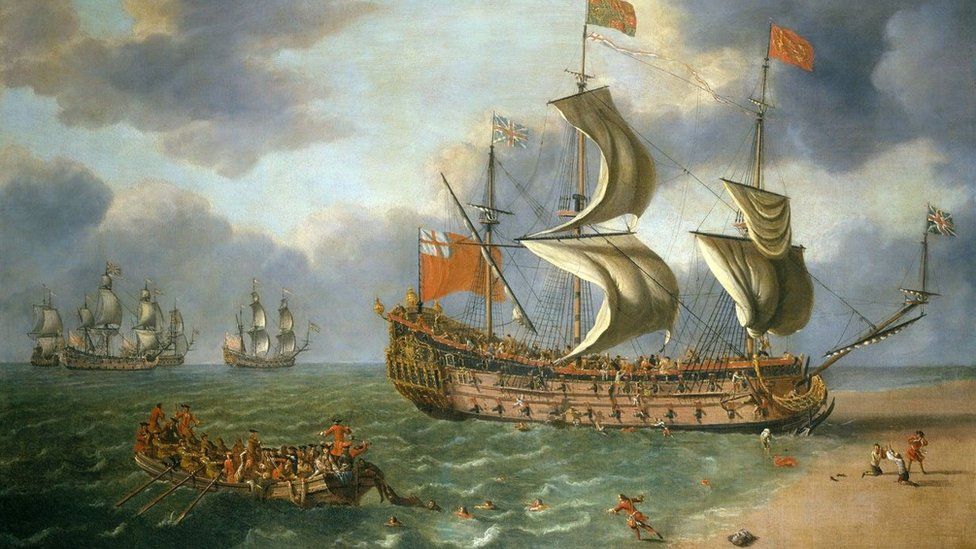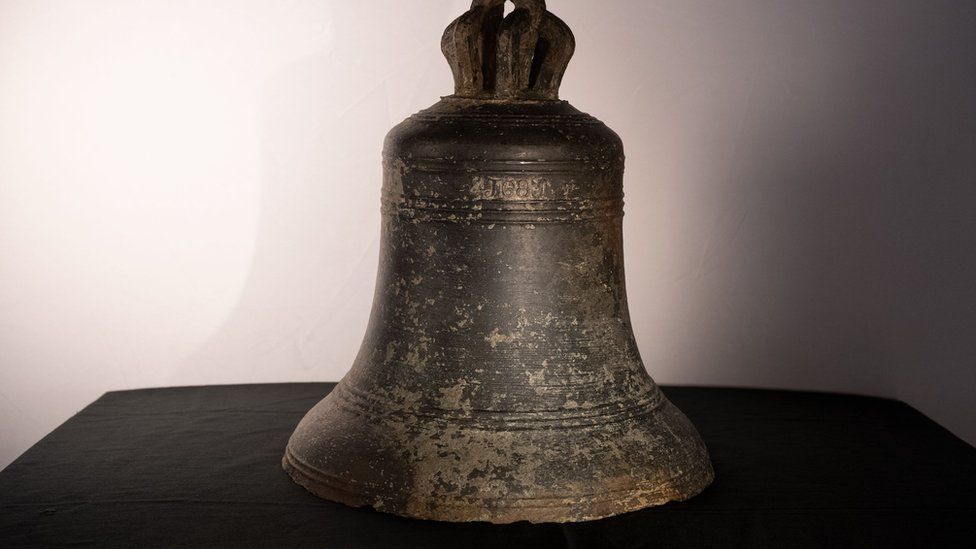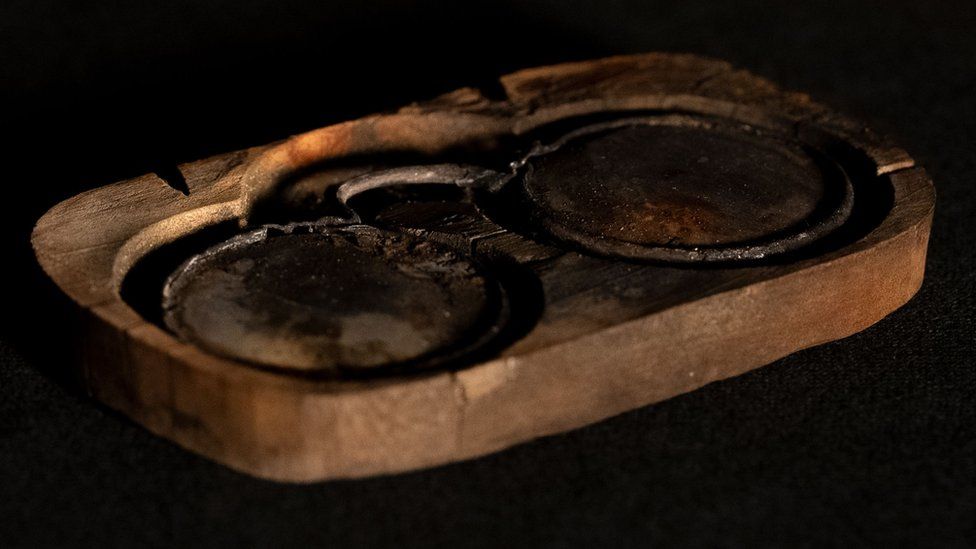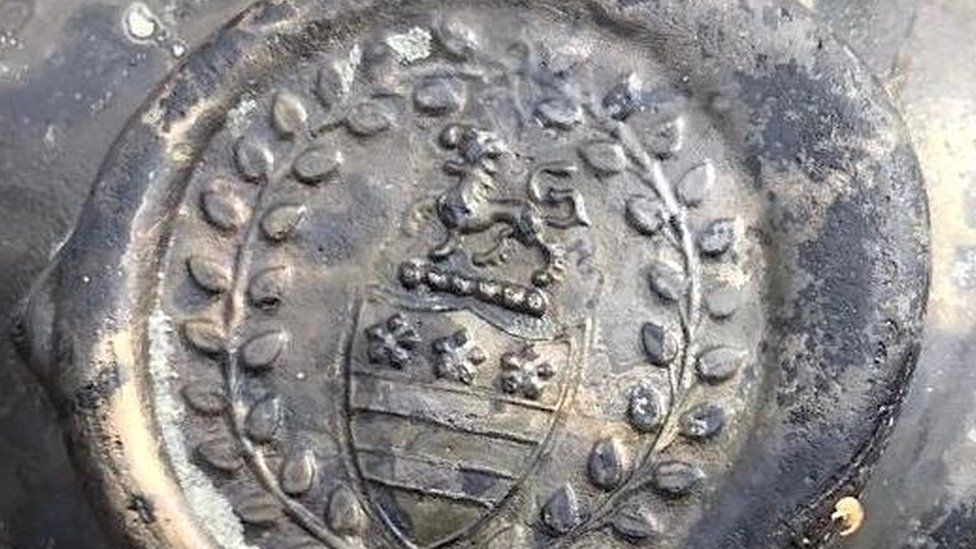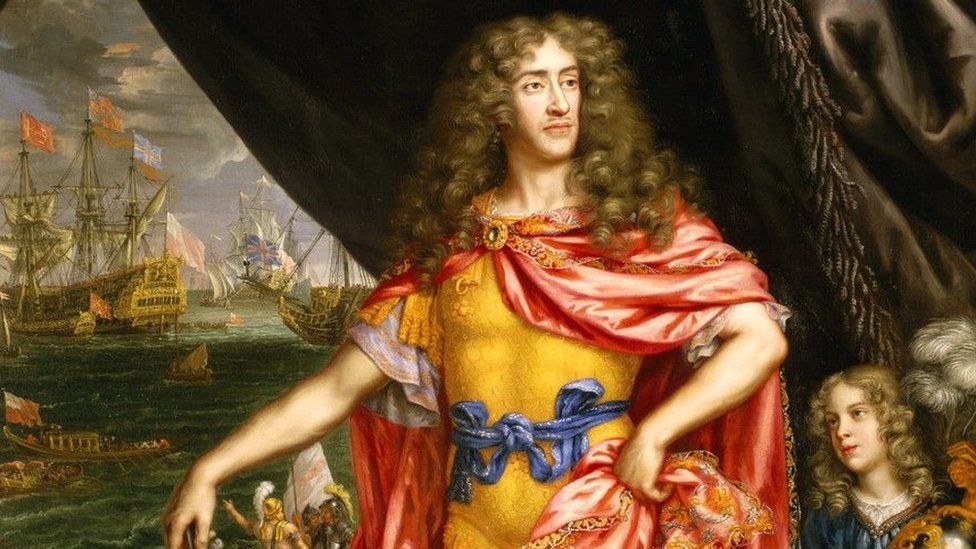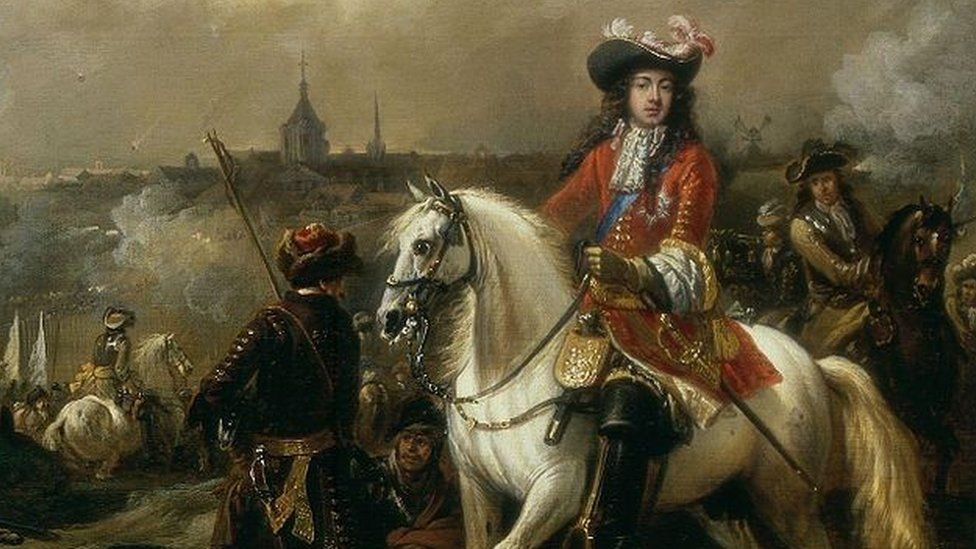BBC News 10 June 2022
The discovery of a shipwrecked warship that sank while carrying a future King has been hailed the most important maritime find since the Mary Rose.
The Gloucester ran aground off the coast of Great Yarmouth, Norfolk, in 1682, nearly killing the Duke of York, who became King James II of England.
The find, which was discovered by divers in 2007, has only just been revealed due to security reasons.
The Gloucester's exact whereabouts were a mystery until it was discovered 15 years ago half-buried in the seabed 28 miles (45km) out to sea, having sunk while navigating treacherous sandbanks.
The disaster, in which hundreds of passengers and crew died, threatened to change the course of history.
However, the then Duke of York fled the sinking ship with moments to spare and went on to become the Catholic heir to the Protestant throne in an era marked by religious and political unrest.
Prof Jowitt, an authority on maritime cultural history and based at Norwich's University of East Anglia (UEA), said: "Because of the circumstances of its sinking, this can be claimed as the single most significant historic maritime discovery since the raising of the Mary Rose in 1982.
"The discovery promises to fundamentally change understanding of 17th Century social, maritime and political history.
"It is an outstanding example of underwater cultural heritage of national and international importance... the full story of the Gloucester's last voyage and the impact of its aftermath needs re-telling."
Norfolk-based printer brothers Julian and Lincoln Barnwell, together with their late father, friend James Little and another unnamed friend, spent four years on diving expeditions to find the Gloucester's watery grave.
Lincoln said he was inspired by memories of the Mary Rose's lifting, but the team was feeling defeated when he eventually spotted a large cannon on the seabed.
"It was awe-inspiring and really beautiful," he said.
"It instantly felt like a privilege to be there, it was so exciting.
"We were the only people in the world at that moment in time who knew where the wreck lay - that was special and I'll never forget it."
His brother Julian said they initially had no idea how historically significant the Gloucester was.
"We had read the Duke of York was on board but that was it," he said.
"We were confident it was the Gloucester, but there are other wreck sites out there with cannons, so it still needed to be confirmed.
"There is still a huge amount of knowledge to be gained from the wreck, which will benefit Norfolk and the nation."
Although the team discovered the 340-year-old shipwreck in 2007, it was not until the ship's bell was recovered in 2012 that the Receiver of Wreck and Ministry of Defence decisively identified it.
Since then the "at risk" site - in international waters - has had to be protected, which is why the discovery is only now being made public and its exact location undisclosed.
A major exhibition is being planned to run from February to July 2023 at Norwich Castle Museum.
An accompanying research project will also examine the circumstances of the tragedy and conspiracy theories.
While the Gloucester was not a slave-trading ship, many people from diverse cultural backgrounds lost their lives and historians will make sure their stories are told, the UEA said.
What was The Gloucester and what is left of it?
Launched in 1654 with 54 guns and 280 crew, The Gloucester is the only surviving third-rate Cromwellian warship.
It took part in multiple battles and became part of the Royal Navy fleet after 1660, when King Charles II was restored to the throne.
The shipwreck is split down the keel, with remains of the hull submerged in sand, and it is not known how much of it is intact. There are no plans to raise any part of it.
As well as the ship's bell, divers have found clothes, shoes, navigational equipment, personal possessions and unopened wine bottles.
One of the wine bottles bears a glass seal with the crest of the Legge family - ancestors of George Washington, the first US President.
No human remains have been found so far - only animal bones.
Did the future King save dogs and priests over crew?
The Gloucester had set sail from Portsmouth to Edinburgh to allow the Duke of York to conduct royal business at the Scottish Parliament.
It struck a sandbank during a strong gale 28 miles (45km) off Great Yarmouth on the morning of 6 May 1682 and sank within an hour.
The Duke of York and John Churchill, the future Duke of Marlborough, were rescued in the ship's boat.
While some of the estimated 330 people on board were rescued by boats from the fleet, it is believed between 130 and 250 sailors and passengers perished.
Witnesses claimed the future King saved Catholic priests and his dogs over courtiers and crew, and, given that a royal had to leave a ship first, caused countless deaths by delaying his escape.
He accepted no responsibility for the tragedy - despite arguing over the ship's course, as former Lord High Admiral - and blamed the pilot, who was later imprisoned.
The diarist Samuel Pepys, who was travelling in the royal fleet, wrote that some survivors and victims were plucked "half dead" from the sea.
What would've happened if the Duke of York had died?
The Duke of York went on to become King James II of England and Ireland (and King James VII of Scotland) in 1685, on his brother's death.
Had he drowned in 1682, King Charles II's illegitimate son, James Scott, the Duke of Monmouth, might well have inherited the throne.
The reign of King James II - a Catholic - was marked by political and religious turmoil and he was deposed in the Glorious Revolution of 1688.
Some of those who took part had taken a dim view of the Duke over his actions on The Gloucester.
The revolution created a new type of state, contributed greatly to the modern world and might not have happened had he died at sea, the UEA said.
Alternatively, civil war might have ensued between those who supported the Duke of Monmouth against the claims of the Duke of York's legitimate daughter, Mary and her Dutch husband, William of Orange, it added.

